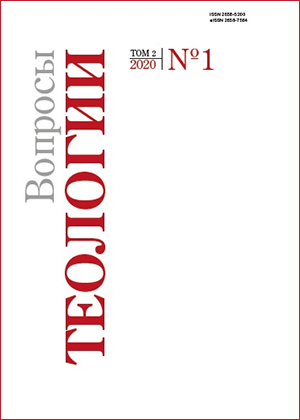Bə-‘ēmeq ha-bākā (Psalms 84:7) interpreted as ‘Vale of tears’ in early Jewish exegesis and beyond
DOI:
https://doi.org/10.21638/spbu28.2020.106Abstract
The present study tracks the genealogy of the figurative-paronymic interpretation that considers בָּכאָ bākā (Psalms 84:7) a reference to tears and weeping from the Septuagint to several rabbinic Jewish sources where the term ‘ēmeq ha-bākā has been identified either as a reference to the Gehenna (Targum and Talmud), as a metaphoric denomination of the mundane Vale of tears in the liturgical poem שוֹשַןׁ עמֵֶק אֲיוּמָה Šōšan ‘ēmeq ayūmāh or as a figurative denomination of the Exile in Isaiah of Trani’s commentary to Psalms 84:7, as well as by two Renaissance Jewish authors, Joseph Ha-Kohen Ha-Rofe and Rabbi Shelomo Alqabeṣ. Following David Qimḥi’s interpretation of the verse, the author suggests rereading the hemistich in Psalms 84:7 in a more litteral way through the identification of בָּכאָ bākā with the mulberry tree. Qimḥi’s isolated interpretation is all the more tempting in that the Latin term bacca/bāca “berry” itself could be viewed as the borrowing of the Phoenician or Punic word bākā, parallel to Hebrew בָּכאָ bākā.
Keywords:
Septuagint, Targum, Talmud, classical piyyuṭ, Isaiah of Trani, Joseph Ha-Kohen Ha-Rofe, Shelomo Alqabeṣ, Punic loanwords in Latin
Downloads
References
References
Downloads
Published
Issue
Section
License
Articles of "Issues of Theology" are open access distributed under the terms of the License Agreement with Saint Petersburg State University, which permits to the authors unrestricted distribution and self-archiving free of charge.




